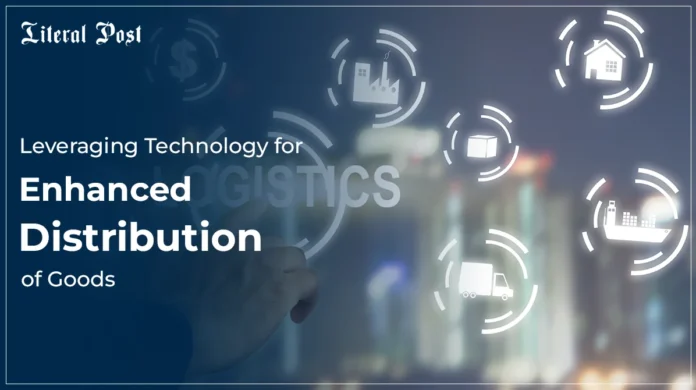Since its inception, technology has completely reshaped the world into a closely connected global community. Its impact is evident in our daily lives, as well as in the operations of businesses and industries. In recent years, it has become increasingly clear that technology plays a crucial role in revolutionizing the distribution of goods. Technological advancements have transformed the distribution landscape from streamlining supply chains to improving last-mile delivery. A common question arises: What is one way that technology can improve the distribution of goods? In this blog, we will shed light on the most impactful way technology can enhance the distribution of goods: through automation.
Automation: Streamlining Operations
Automation is reshaping the distribution industry by streamlining operations and reducing manual intervention. With the advent of robotics and artificial intelligence (AI), warehouses and distribution centers can now operate more efficiently than ever before.
Robotic Warehousing Systems
Robotic warehousing systems have emerged as a game-changer in the distribution sector. These systems utilize autonomous robots equipped with advanced sensors and algorithms to automate various tasks such as picking, packing, and sorting. By leveraging robotics, companies can significantly increase throughput while minimizing errors and labor costs.
AI-driven Inventory Management
AI-driven inventory management solutions empower businesses to optimize stock levels and improve forecasting accuracy. Through machine learning algorithms, these systems analyze historical data, market trends, and consumer behavior to predict demand patterns and ensure the right products are available at the right time and location. This proactive approach reduces stockouts and prevents overstocking, thereby maximizing inventory turnover and minimizing holding costs.
Supply Chain Visibility: Real-time Tracking and Monitoring
Another way technology enhances the distribution of goods is by providing real-time visibility into the supply chain. Through IoT (Internet of Things) devices and sensor technology, companies can track the movement of goods from the point of origin to the final destination with unprecedented accuracy.
IoT-enabled Tracking Devices
IoT-enabled tracking devices like RFID tags and GPS trackers allow businesses to monitor real-time shipments’ location, condition, and status. This level of visibility enables proactive issue resolution, reduces the risk of lost or stolen goods, and enhances customer satisfaction by providing accurate delivery estimates.
Predictive Analytics for Proactive Decision-making
Furthermore, technology empowers organizations with predictive analytics capabilities to anticipate potential disruptions and proactively mitigate risks. By analyzing vast amounts of data in real-time, supply chain analytics algorithms can identify trends, detect anomalies, and recommend optimal routing and sourcing strategies to ensure an uninterrupted flow of goods.
On-demand Delivery: Meeting Consumer Expectations
In today’s on-demand economy, consumers expect fast and convenient delivery options. Technology enables businesses to meet these expectations by offering innovative delivery models like same-day, on-demand, and last-mile logistics solutions.
Drone Delivery
Drone delivery represents the future of logistics, offering a cost-effective and efficient means of transporting goods over short distances. By leveraging autonomous drones, companies can bypass traffic congestion and deliver packages directly to customers’ doorsteps within minutes, revolutionizing the last-mile delivery experience.
Collaborative Logistics Platforms
Collaborative logistics platforms facilitate connections among retailers, carriers, and third-party logistics providers to optimize delivery routes and share resources. Through crowd-sourcing delivery tasks and utilizing shared warehousing facilities, businesses can decrease delivery times, reduce transportation expenses, and promote sustainability by minimizing carbon emissions.
Conclusion
Technology is seriously shaping the distribution of goods from point A to point B. It’s helping businesses work smoother, respond quicker to consumer demand, and offer satisfactory customer experience. By integrating automation, enhancing supply chain visibility, and innovating effective delivery solutions, businesses can stay ahead of the curve and thrive in today’s dynamic marketplace.













